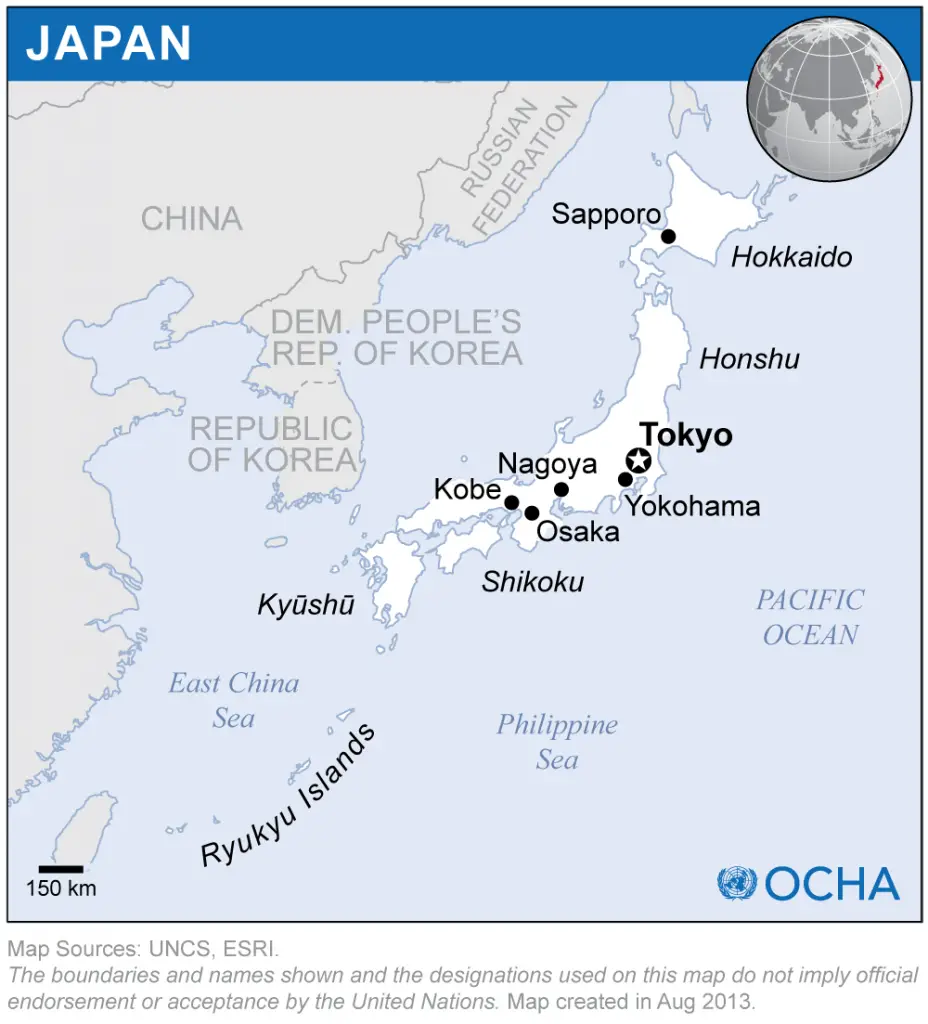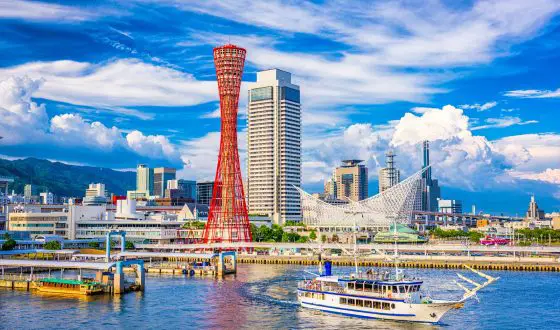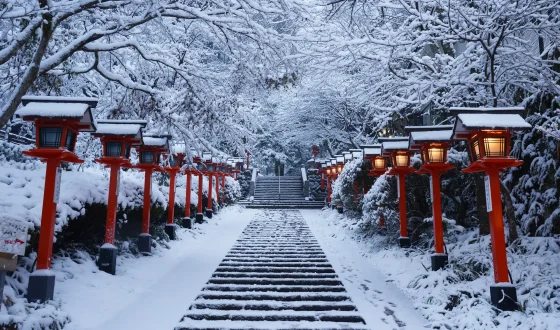Where Is Japan Earthquake Epicenter Location?
Mentioning earthquakes in Japan, you may immediately remember the devastating one called Tōhoku which happened on March 11, 2011 with the magnitude of 9.0. But do you know that Japan has many other earthquakes every year and it is well-known for being an earthquake-prone country beside that natural disaster? If you are wondering “Where is Japan earthquake epicenter location?” or “Are there any places safe from earthquakes in Japan?”, etc., you should definitely check this blog out to get the answers!
What You Should Know About Earthquakes In Japan
1. Earthquake Causes In Japan
The reason why an earthquake occurs is because of the tensions created by the movement of the earth’s tectonic plates. Japan and earthquakes go hand in hand due to the country’s location along the “Pacific Ring of Fire”, where it is bounded by three tectonic plates, including the Pacific Plate under the Pacific Ocean and the Philippine Sea Plate.

Since Japan is bounded by three tectonic plates, it is highly prone to earthquakes.
2. Historic Earthquakes In Japan
Many destructive earthquakes have already hit different parts of Japan. The worst earthquake in Japan history was the Great Kanto Earthquake, which occurred in 1923 and struck the Kanto plain near Tokyo, killing over 100,000 people.
In January 1995, a powerful earthquake named The Southern Hyogo Earthquake, also known as the Great Hanshin Earthquake hit the city of Kobe and its surroundings. It caused the deaths of 6,000 people and resulted in the injury of 415,000. A total of 100,000 houses were destroyed, with another 185,000 seriously damaged.
The biggest earthquake in Japan’s history struck on March 11, 2011, triggering a catastrophic tsunami along the Pacific Coast of northeastern Japan. The 2011 Japan earthquake epicenter location was 80 miles (130 kilometers) east of Sendai, Miyagi prefecture, and the focal was at a depth of 18.6 miles (approximately 30 kilometers) below the western Pacific Ocean’s seabed. The earthquake, which was known as the Great East Japan Earthquake, killed approximately 20,000 people and brought about a nuclear catastrophe at a power plant in Fukushima Prefecture.

Here comes the picture of remnants after the catastrophic Great East Japan Earthquake.
3. Earthquake Measurement In Japan
In Japan, the “shindo” scale is more widely used to measure earthquakes than the Richter scale. The Richter scale measures the magnitude of an earthquake, i.e. the energy released at the epicenter, while the Shindo scale measures the intensity of an earthquake at a specific location, i.e. what people actually feel at a certain location.
The Shindo scale has seven levels, from Shindo one to Shindo seven. An earthquake at Shindo one is really slight, which is only felt by people who are not moving. Shindo two to four are mild earthquakes that produce minimal damage, but shindo five makes objects fall. Shindo six and seven cause more serious damage.

In Japan, the “shindo” scale is more widely used to measure earthquakes than the Richter scale.
SEE MORE:
4. Preparation For Earthquake
As earthquakes can happen at any time in Japan, you should always keep a survival kit that includes a flashlight, a radio, a first-aid kit, etc. in your home. Also, make yourself familiar with the designated evacuation zones in your area. When you are informed about an earthquake in advance, remember to prepare enough food and water to last for a few days. In addition, you need to avoid putting heavy objects in places where they could easily fall and injure people or block escapes during an earthquake and make sure you have a fire extinguisher on hand.

As earthquakes can happen at any time in Japan, you should always keep a survival kit that includes a flashlight, a radio, a first-aid kit, etc. in your home.
5. During And After An Earthquake
During an earthquake, the main threats are falling objects, tumbling furniture, and panic. Protect yourself by hiding under a table or a doorway. Avoid running outside and try to remain calm. If you’re outside in the streets, watch out for glass and other things that may fall from nearby buildings.
After a strong earthquake, turn off ovens, stoves, and the main gas valve. Then, listen to the news on the radio or television. Beware of probable tidal surges (tsunami) in coastal locations, and possible landslides in mountainous areas.

When an earthquake strikes, you should void running outside but try to remain calm and hide under a table or something like that.
List of Japan Earthquake Epicenter Locations
Here comes the table showing several strong Japan earthquakes along with their magnitude and epicenter location since March 2011.
| Date | Magnitude | Name of quake | Epicenter |
| March 11, 2011 | 9.1 | 2011 Tōhoku earthquake | 38.510°N 142.792°E
depth 29 km |
| March 11, 2011 | 7.1 | 2011 Tōhoku earthquake aftershock | 38.106°N 144.553°E
depth 19.7 km |
| April 7, 2011 | 7.1 | 2011 Miyagi earthquake aftershock | 38.253°N 141.640°E
depth 49 km |
| April 11, 2011 | 6.6 | 2011 Fukushima earthquake aftershock | 37.007°N 140.477°E
depth 10 km |
| July 10, 2011 | 7.0 | 2011 Fukushima earthquake aftershock | 38.040°N 143.287°E
depth 49 km |
| January 1, 2012 | 6.8 | Izu Islands, Japan | 31.416°N 138.155°E
depth 348.5 km |
| December 7, 2012 | 7.3 | 2012 Kamaishi earthquake | 37.700°N 144.600°E
depth 32.0 km |
| October 26, 2013 | 7.1 | Off the east coast of Honshu | 37.156°N 144.661°E
depth 35.0 km |
| May 30, 2015 | 7.8 | Bonin Islands | 27.831°N 140.493°E
depth 677.6 km |
| April 16, 2016 | 7.0 | 2016 Kumamoto earthquakes | 32.791°N 130.754°E
depth 10.0 km |
| November 22, 2016 | 6.9 | 2016 Fukushima earthquake | 37.392°N 141.403°E
depth 11.4 km |
| June 18, 2018 | 5.5 | 2018 Osaka earthquake | 34.834°N 135.606°E
depth 13.2 km |
| September 6, 2018 | 6.6 | 2018 Hokkaido Eastern Iburi earthquake | 42.671°N 141.933°E
depth 33.4 km |
| June 19, 2019 | 6.4 | 2019 Yamagata earthquake | 38.635°N 139.4543°E
depth 16.1 km |
| February 13, 2021 | 7.1 | 2021 Fukushima earthquake | 33.7°N 141.8°E
depth 60 km |
| March 20, 2021 | 7.0 | March 2021 Miyagi earthquake | 38.475°N 141.607°E
depth 54 km |
Frequently Asked Questions
1. How Often Does Earthquakes Happen In Japan?
Every year, about 5,000 small earthquakes are registered in Japan, with more than half of them barely felt as they are measured only between 3.0 and 3.9 on the Richter scale. However, the Japanese archipelago is still shaken by about 160 earthquakes with a magnitude of 5 or higher per year.
2. Which City In Japan Has The Most Earthquakes?
Though earthquakes strike all over Japan, the Sanriku region (Aomori, Iwate, Miyagi) and the prefectures around the Sea of Japan coast (Fukui, Ishikawa, Niigata) have historically been the most earthquake-prone.
3. How Many Earthquakes Has Japan Had In 2020?
According to the statistics published by Statista Research Department on February 4, 2021, Japan experienced 4 earthquakes of magnitude 5 or more in 2020.
4. What Is The Safest Place In Japan From Earthquakes?
Despite the constant risk of being hit by a devastating earthquake, Tokyo was named the world’s safest city in 2017 by the Economist Intelligence Unit’s Safe Cities Index, followed by Singapore and, in third place, by Osaka thanks to its earthquake-proof buildings.
SEE MORE:
Conclusion
Hopefully, you have gained some useful information about earthquakes in Japan and known where the Japan earthquake epicenter location is after reading this blog. As Japan is an earthquake-prone country, you should try to get used to this disaster. Prepare to protect yourself and don’t panic when any earthquake happens. Besides, if you want to avoid earthquakes in Japan, living in Tokyo would be the best choice.









